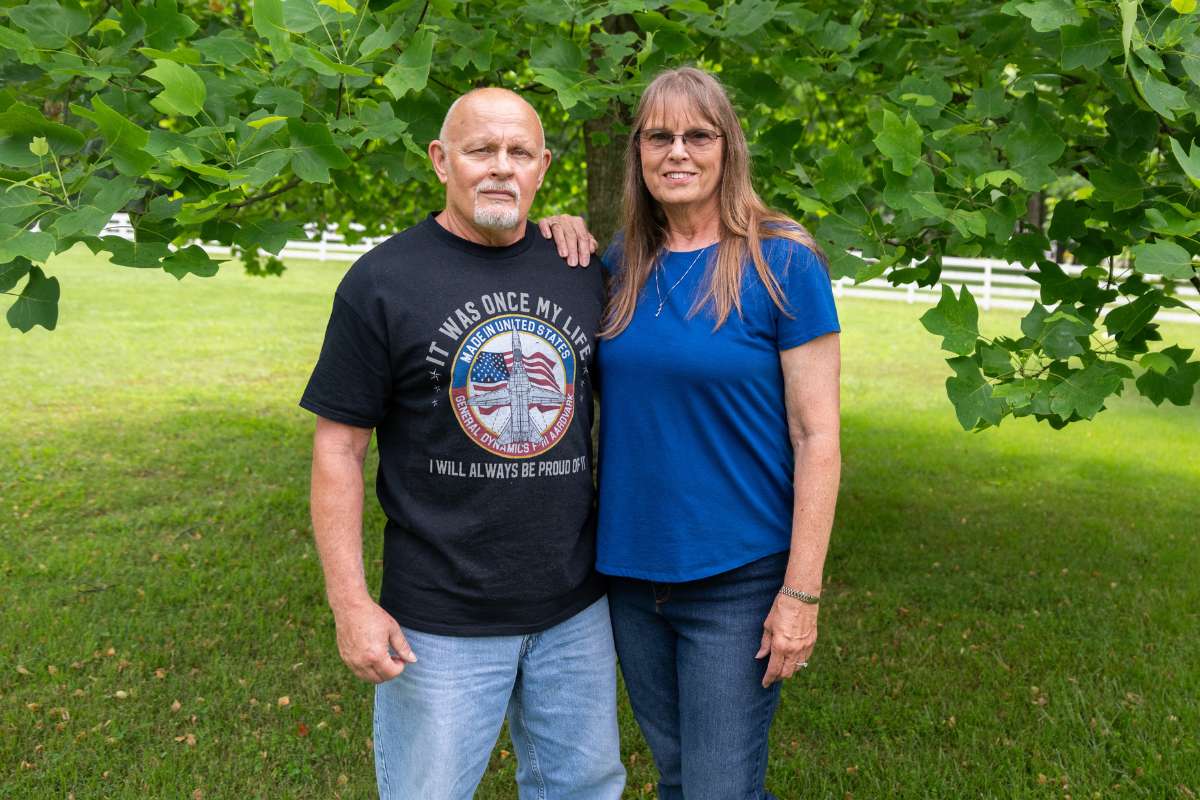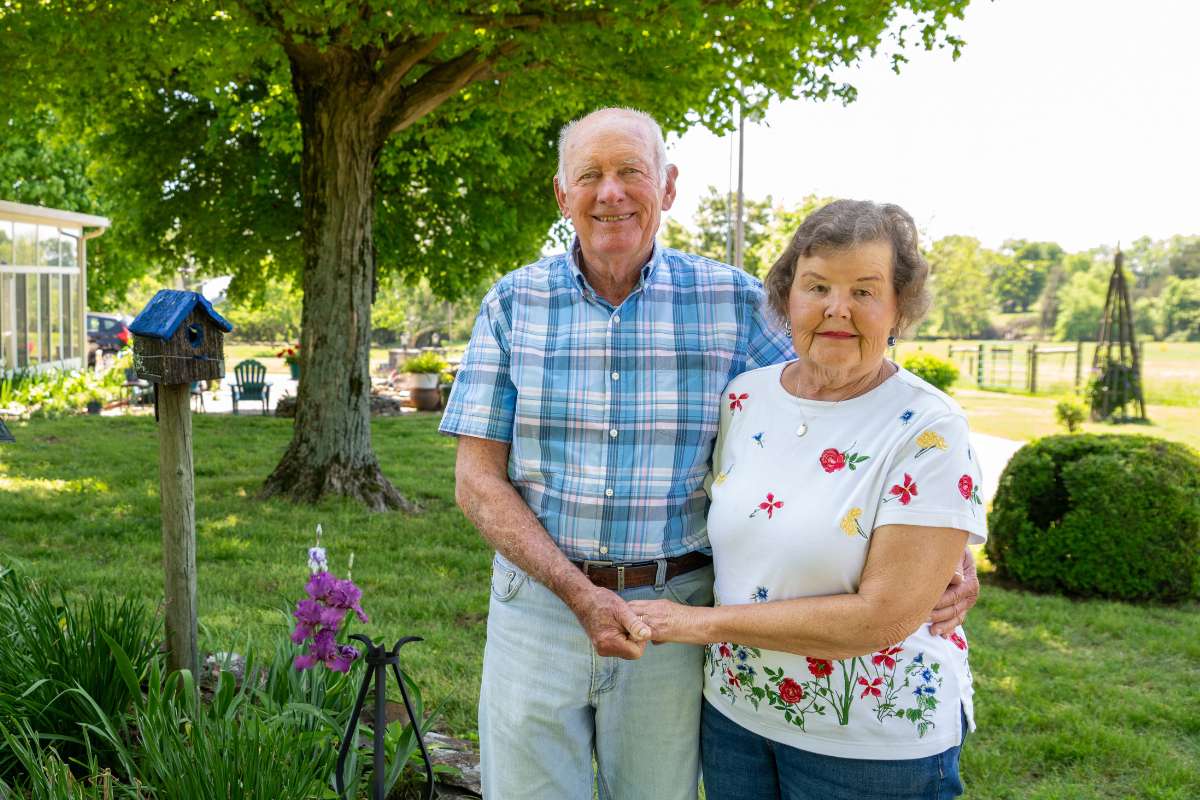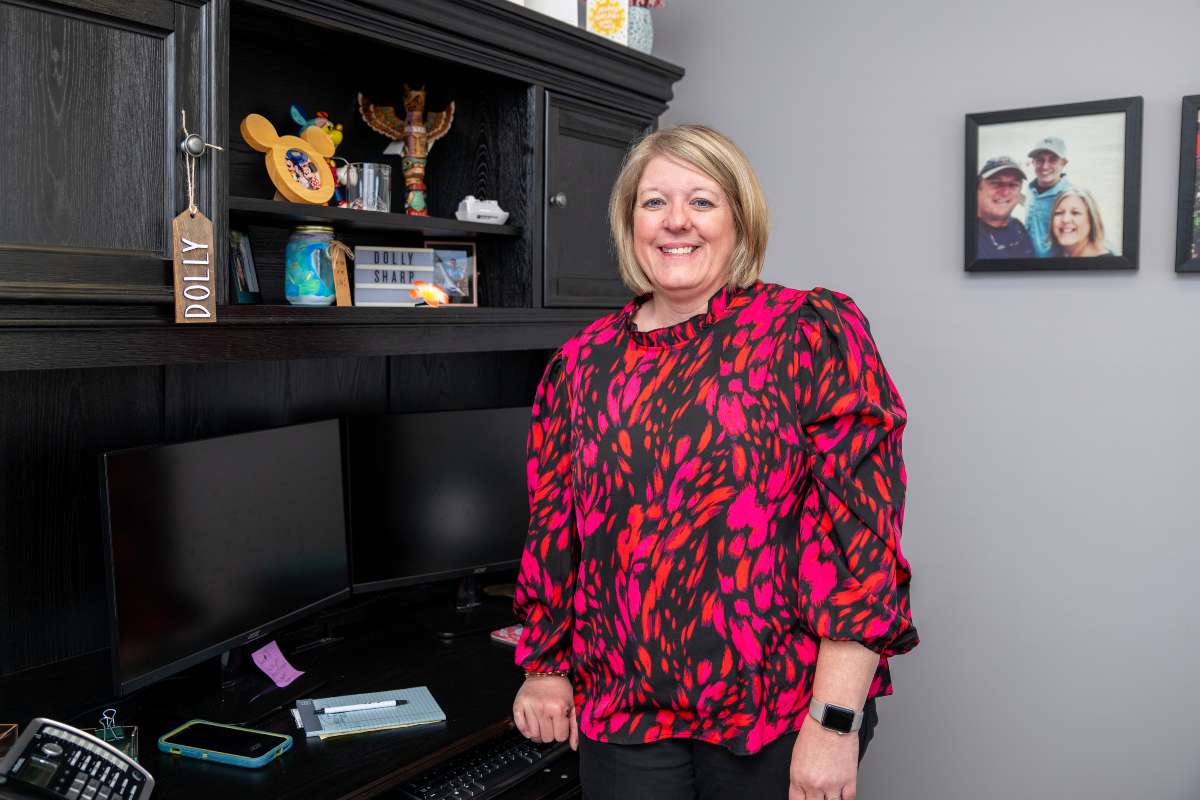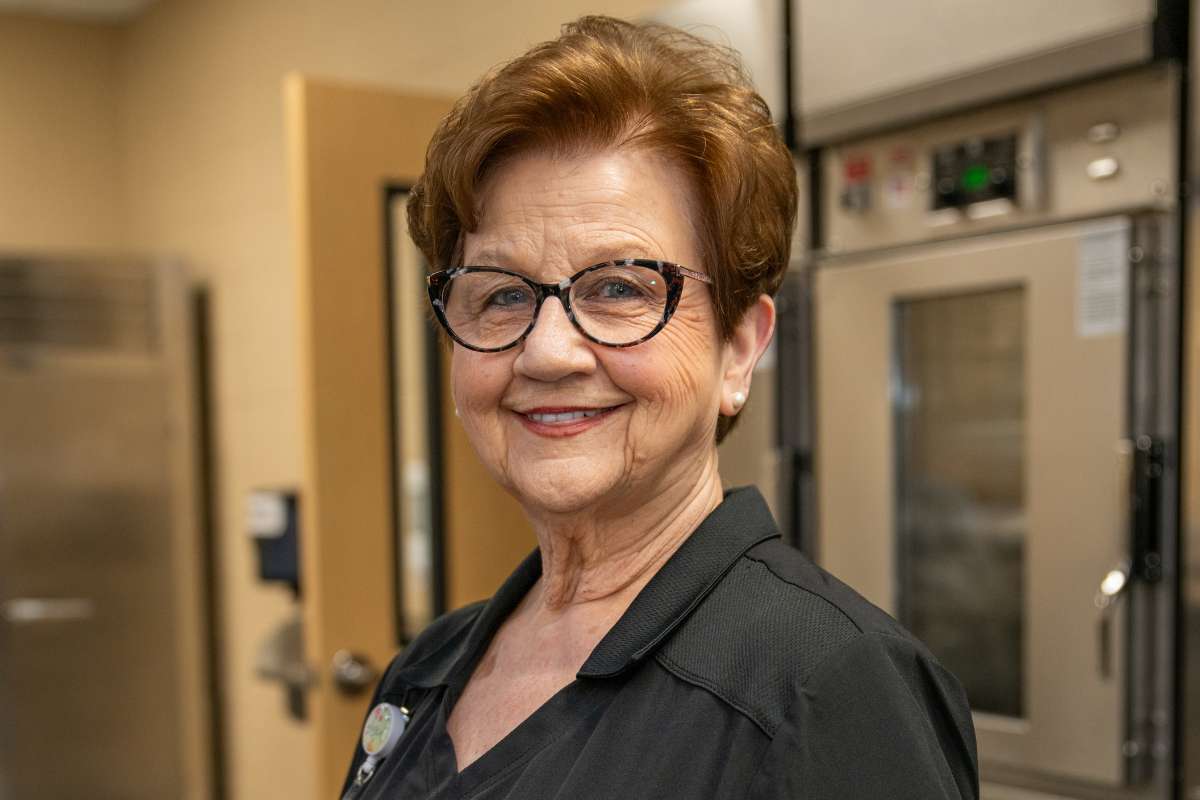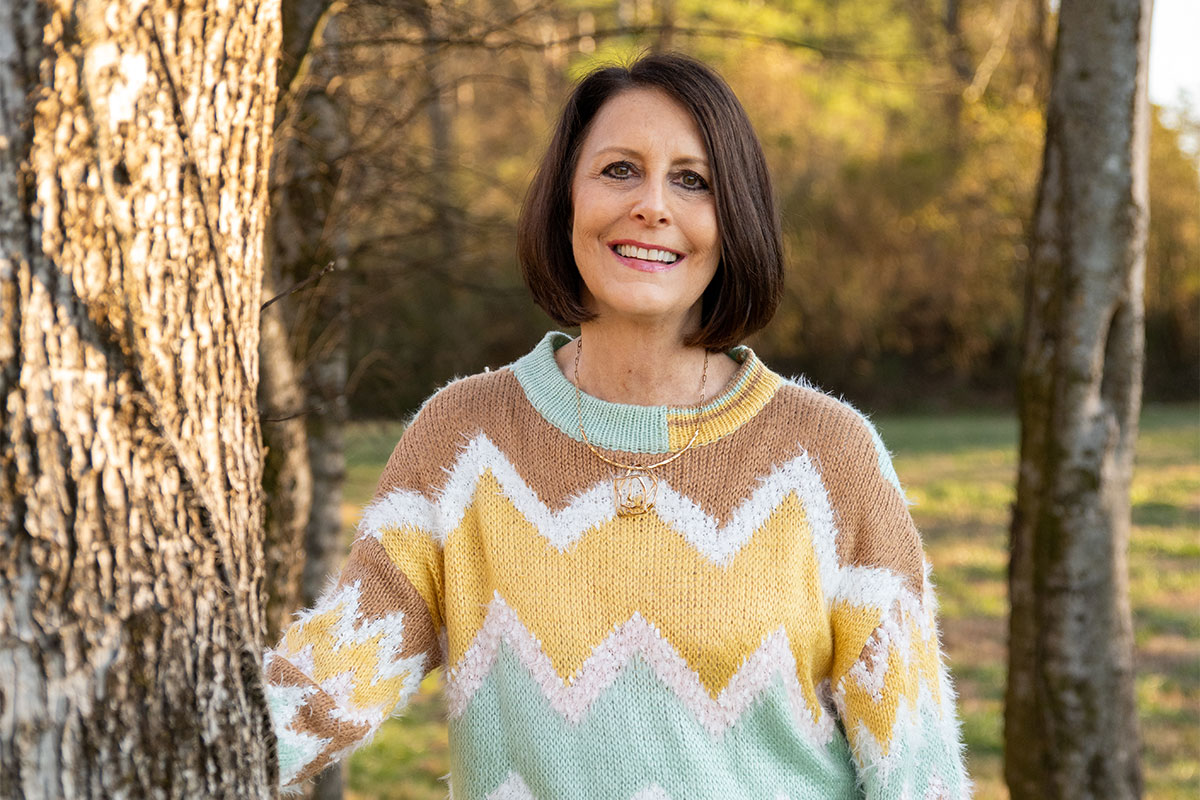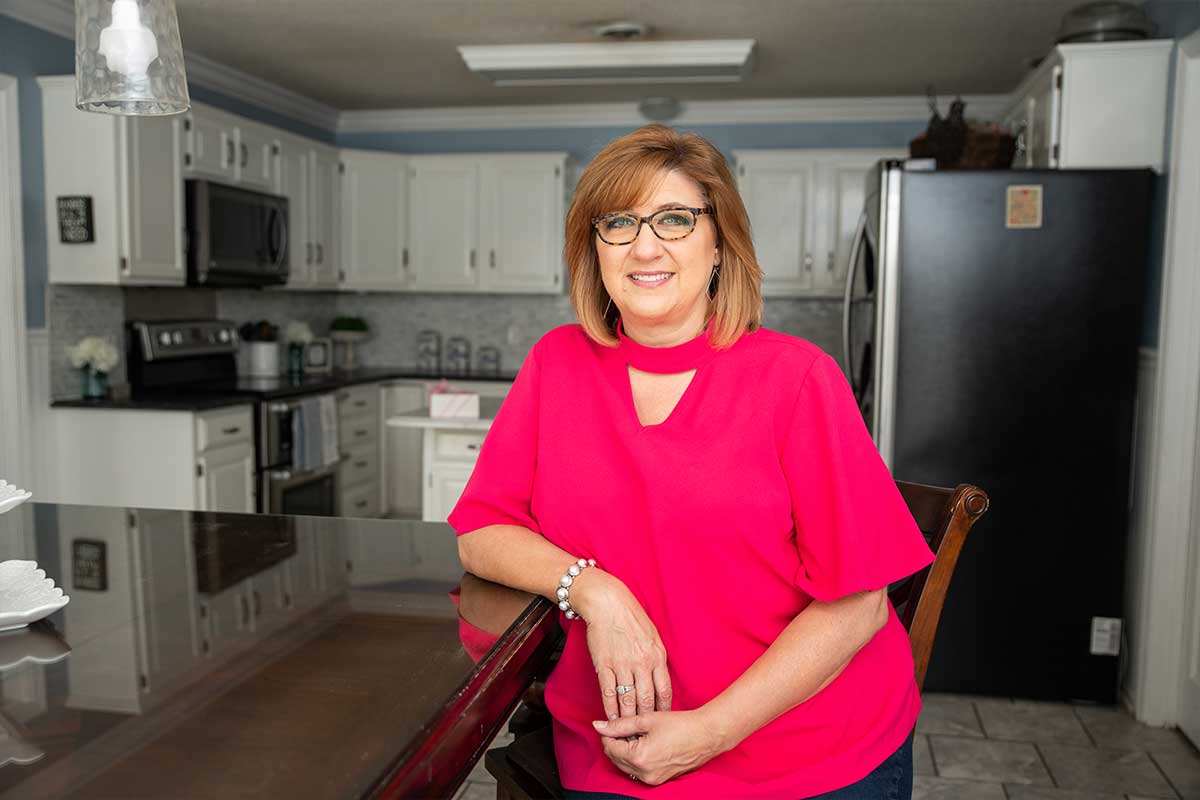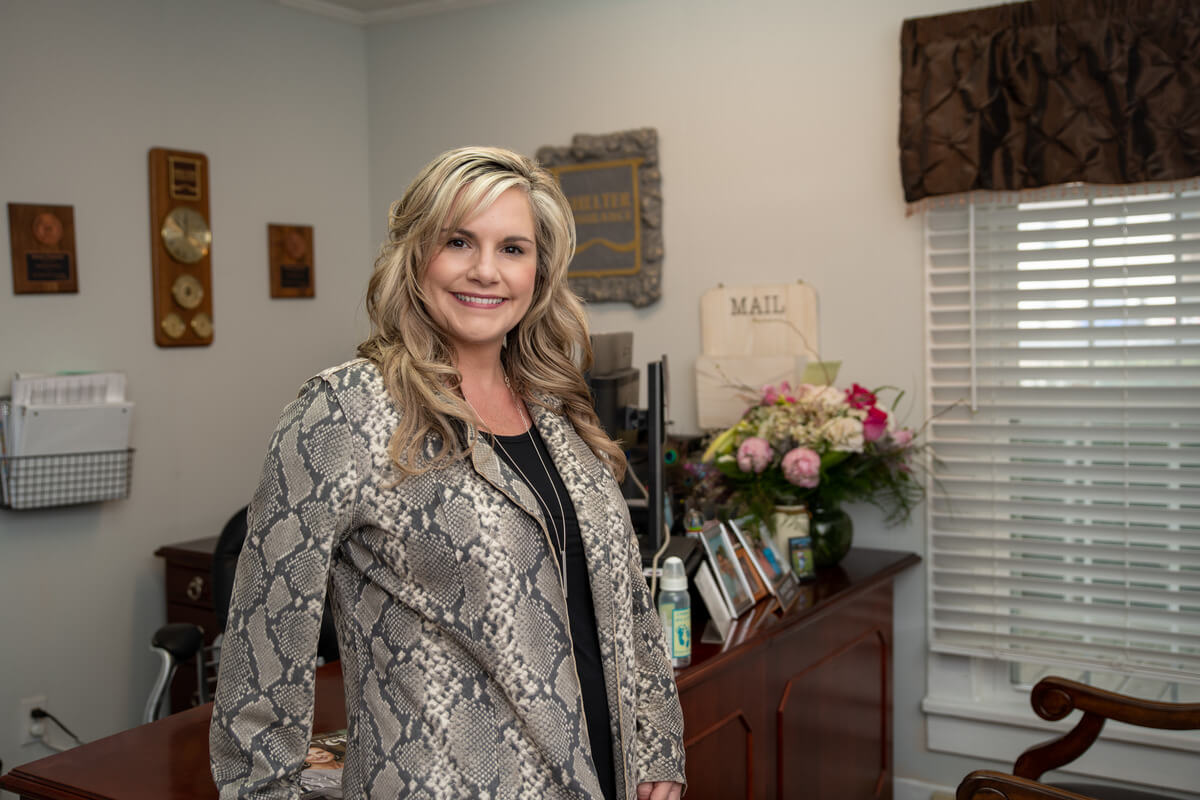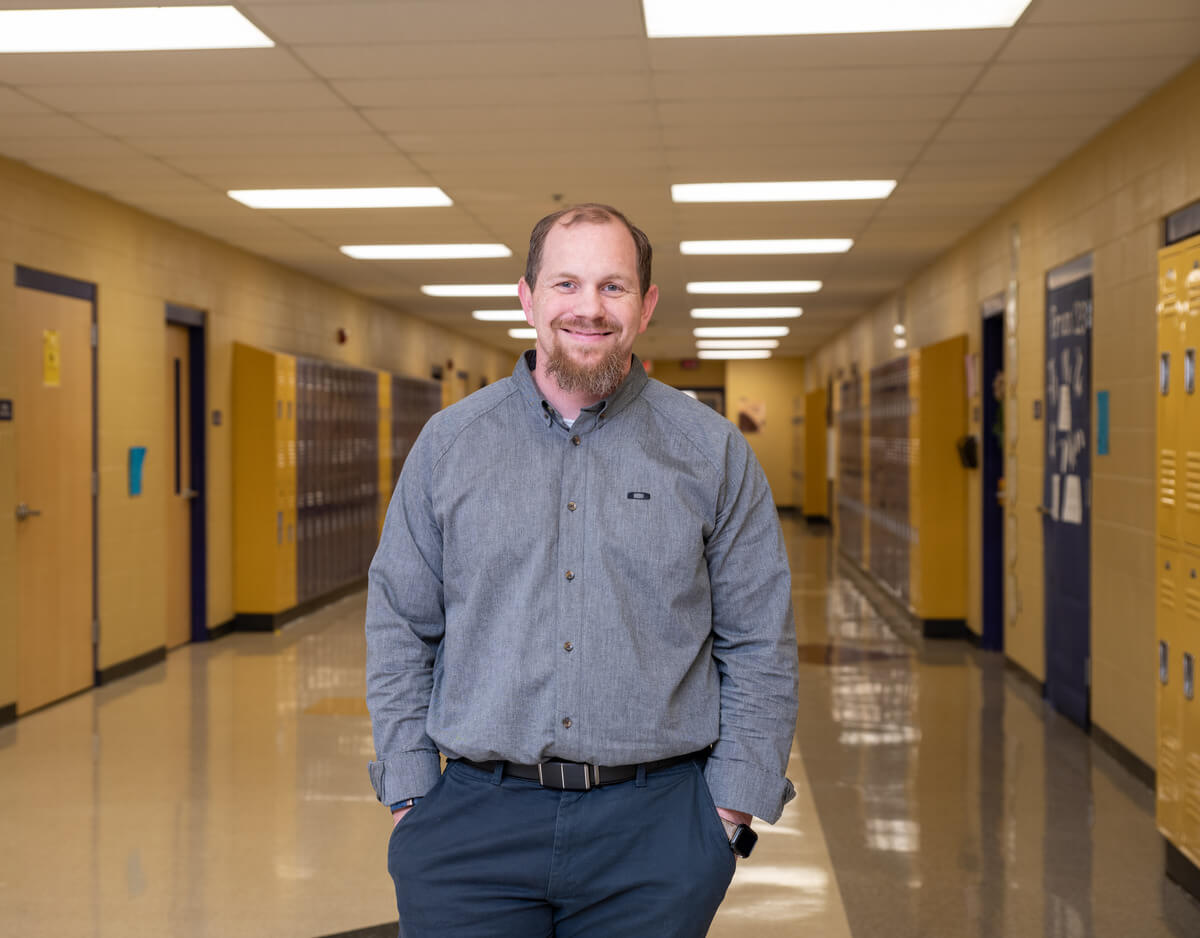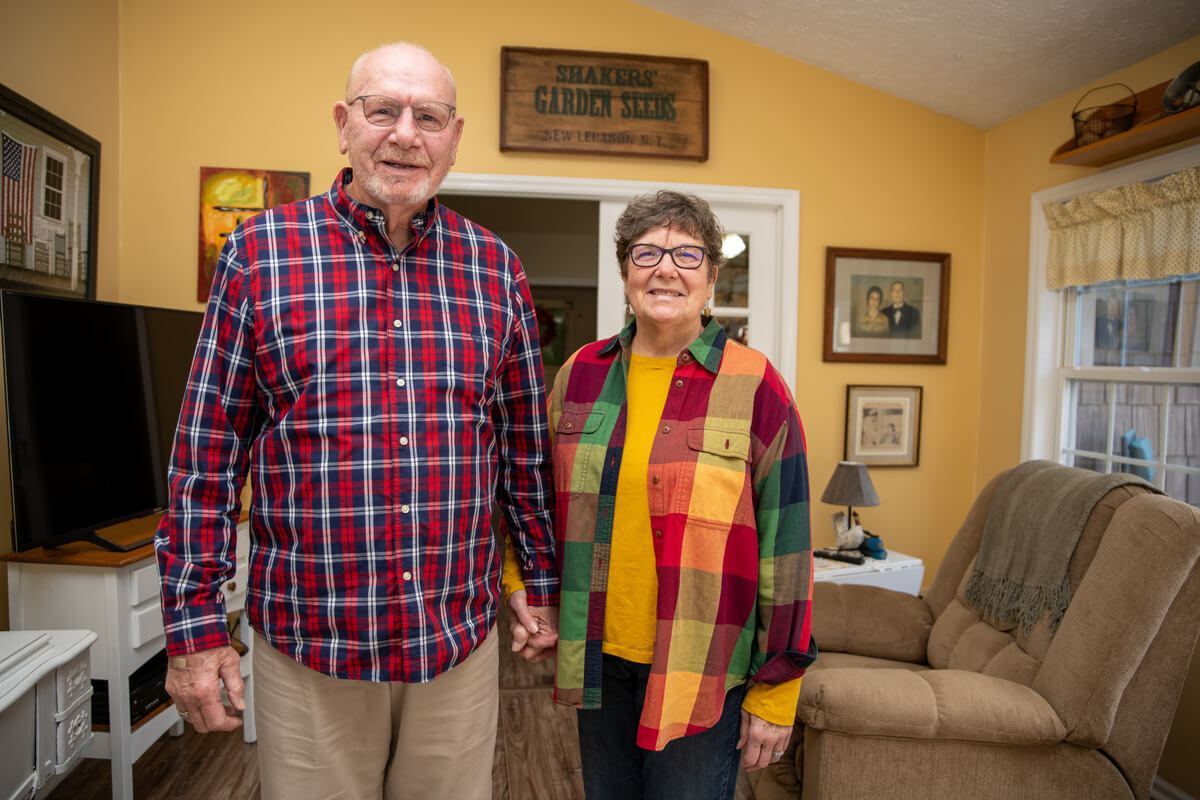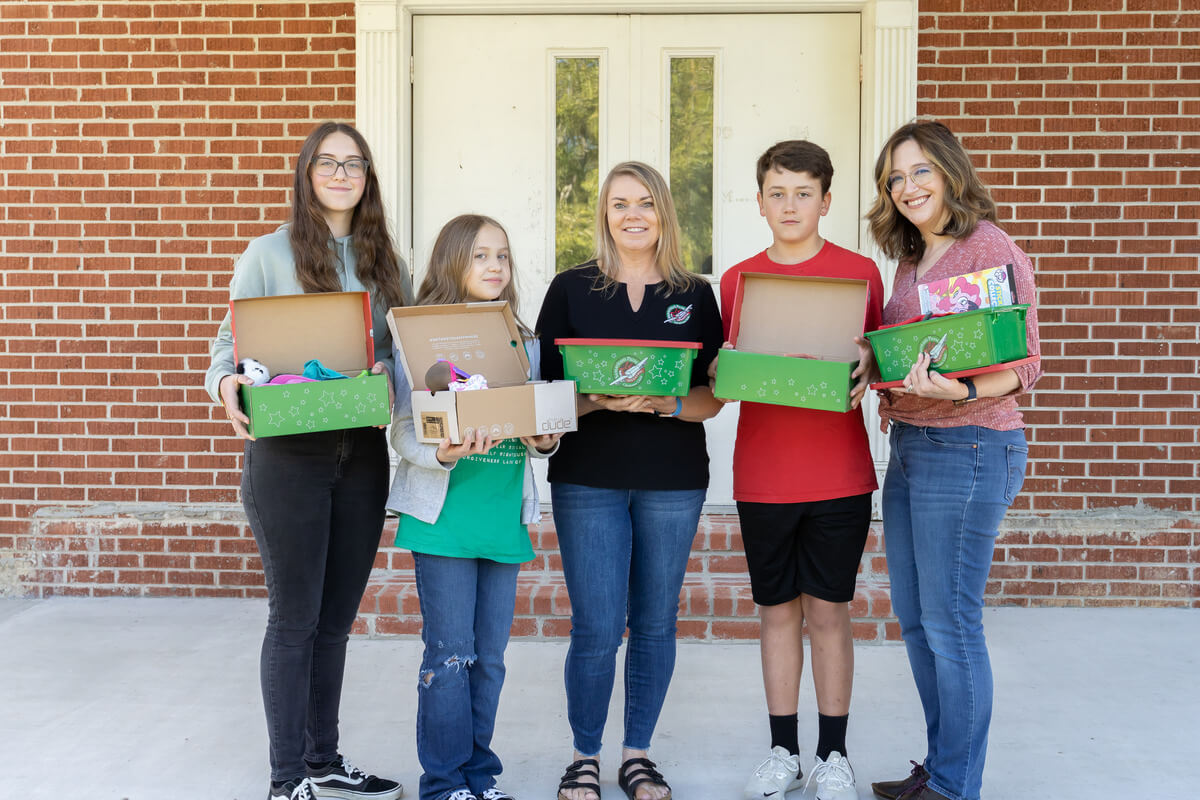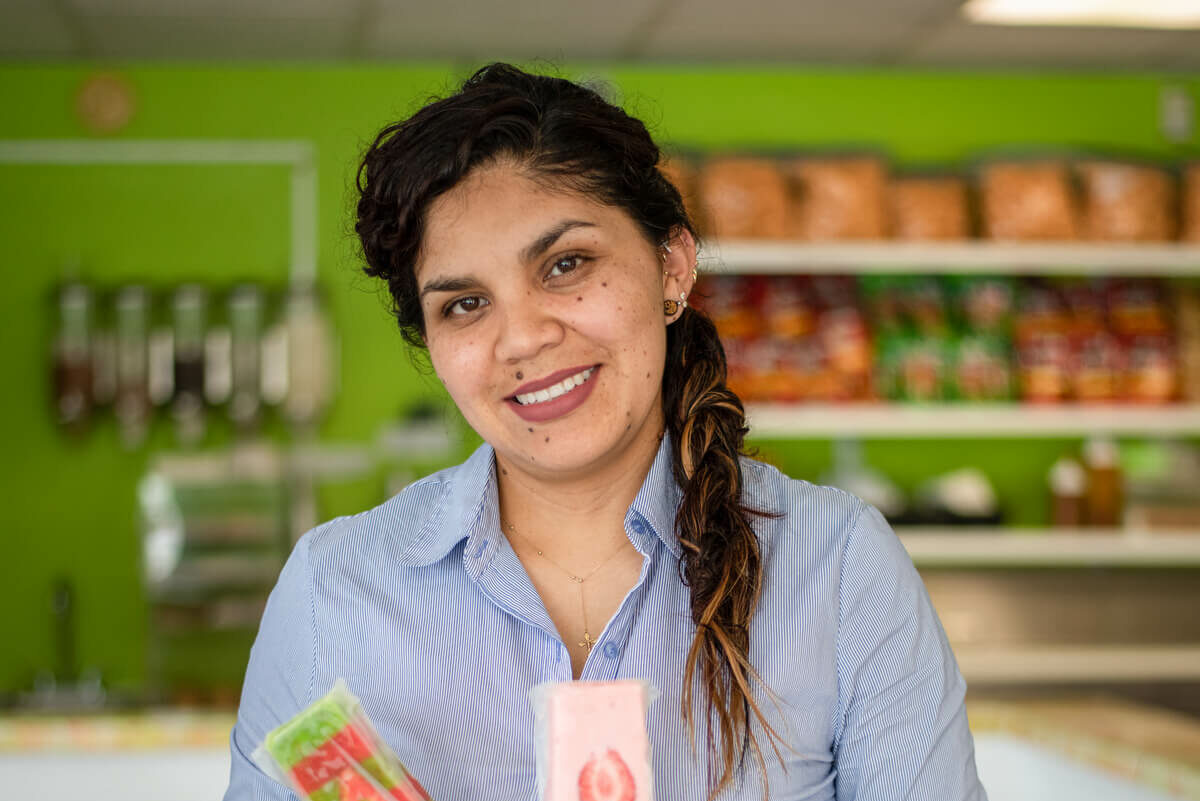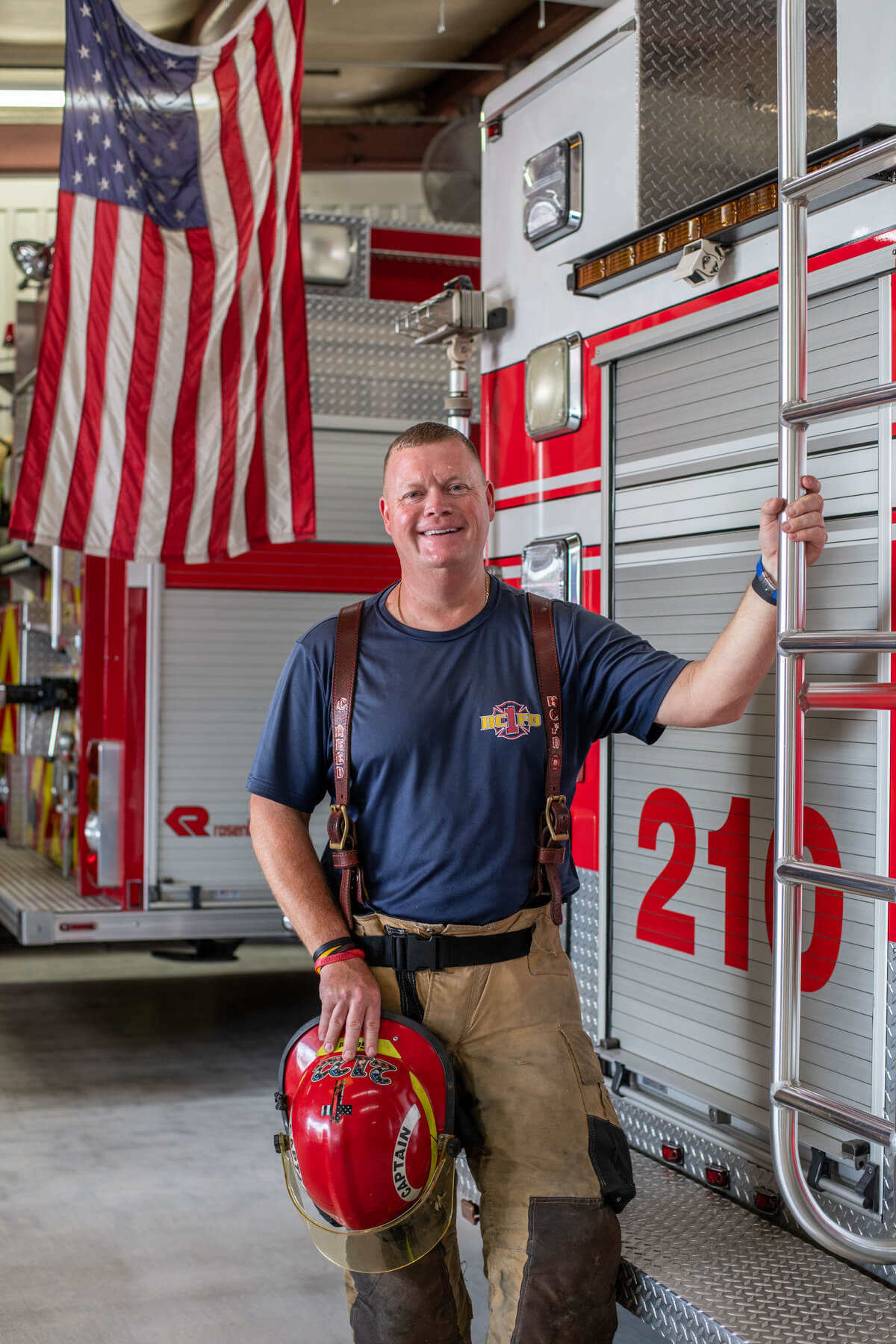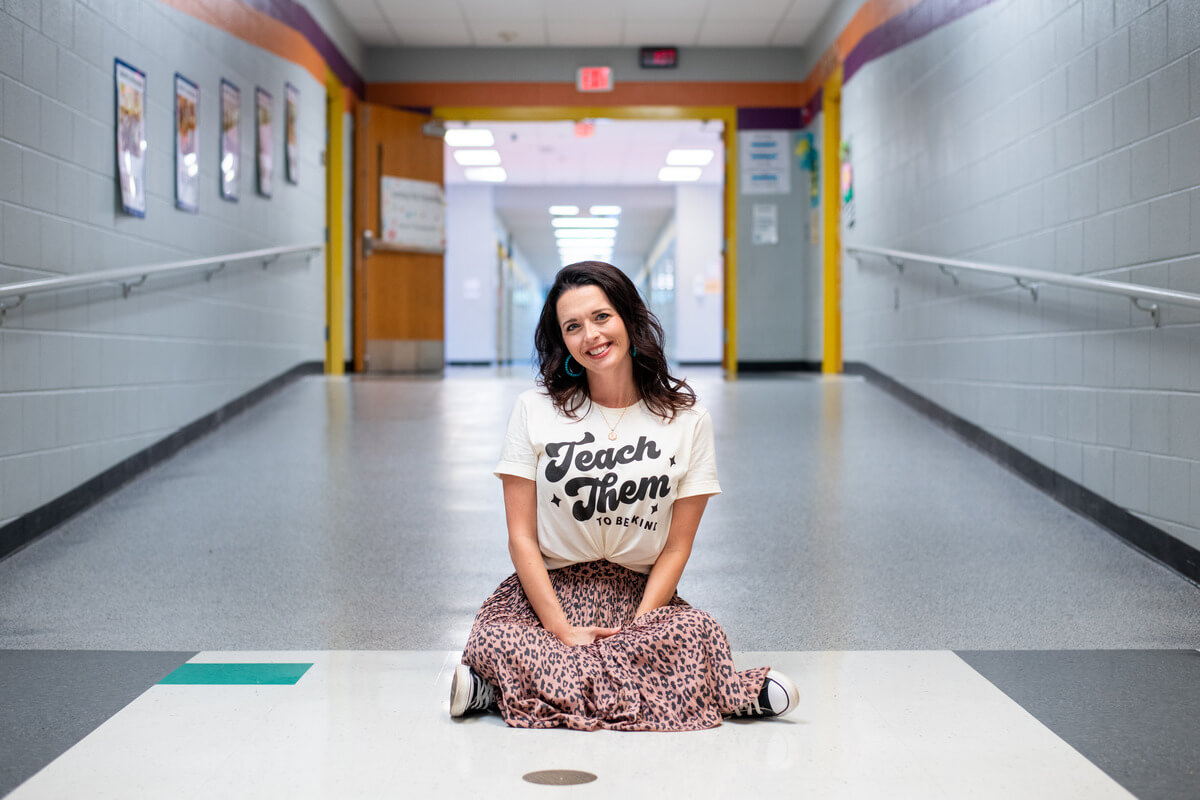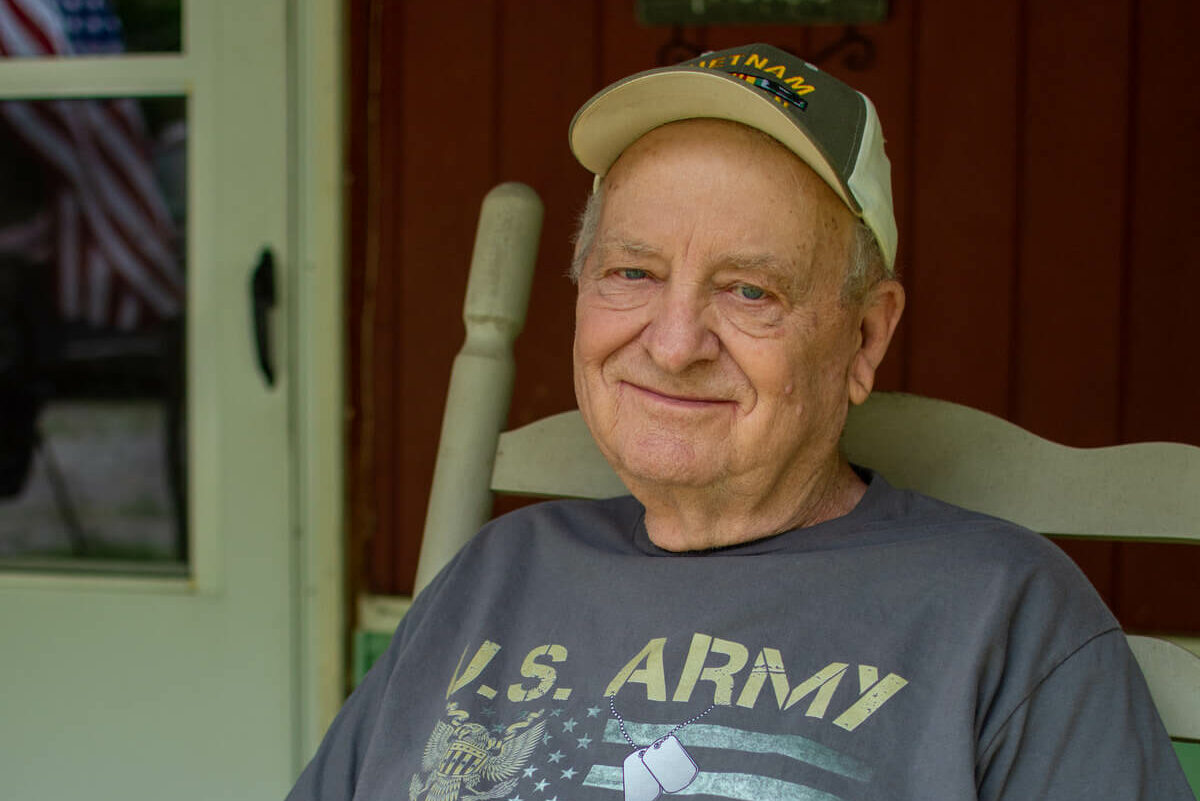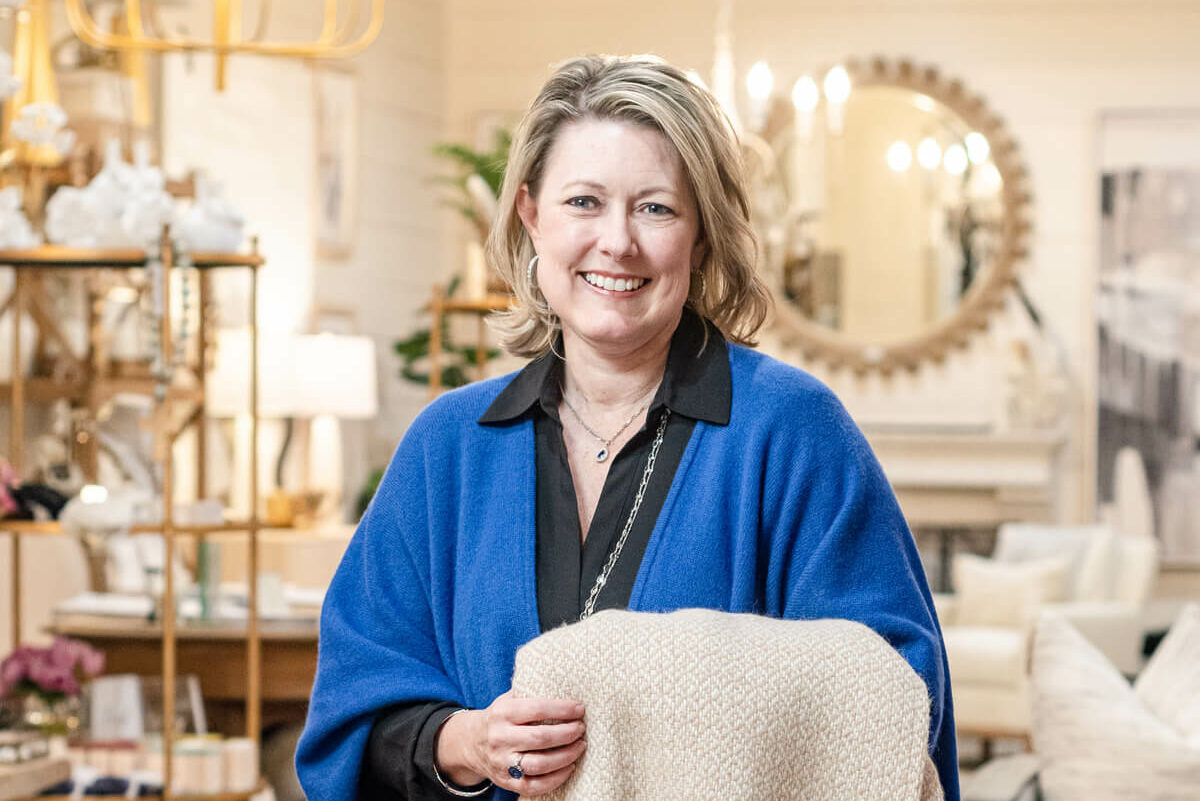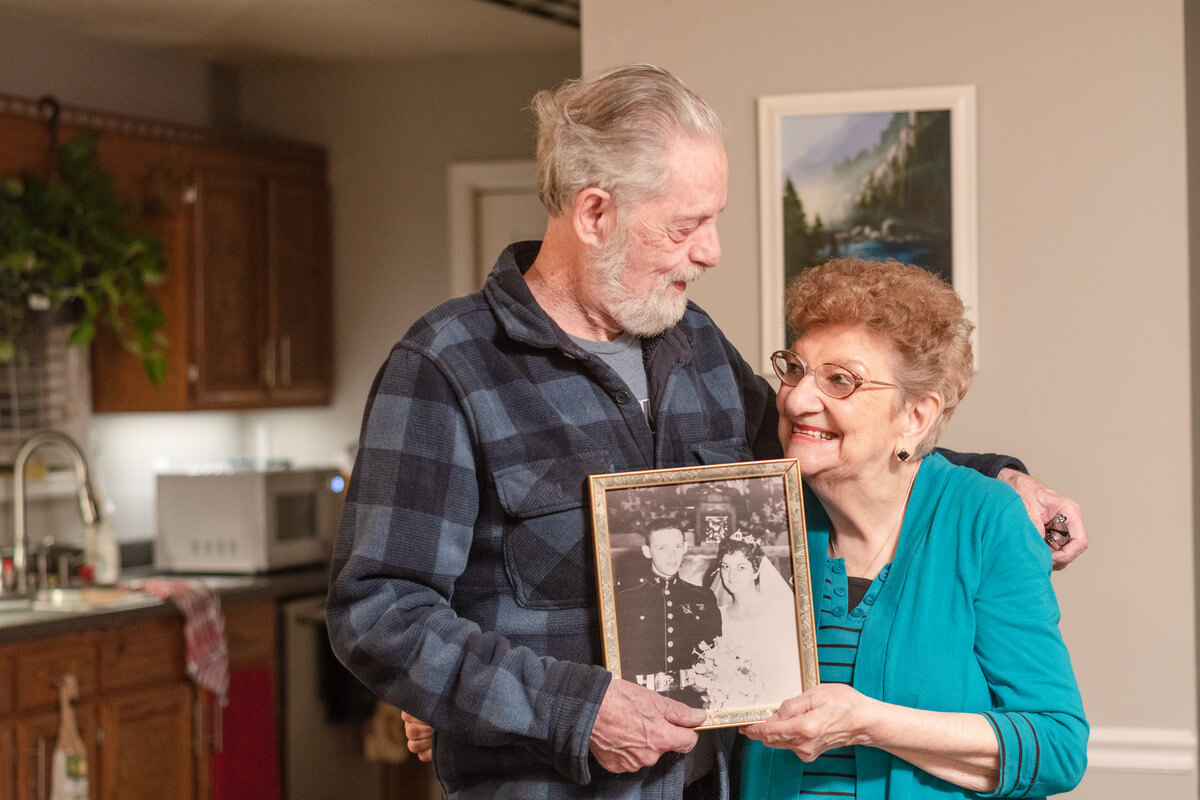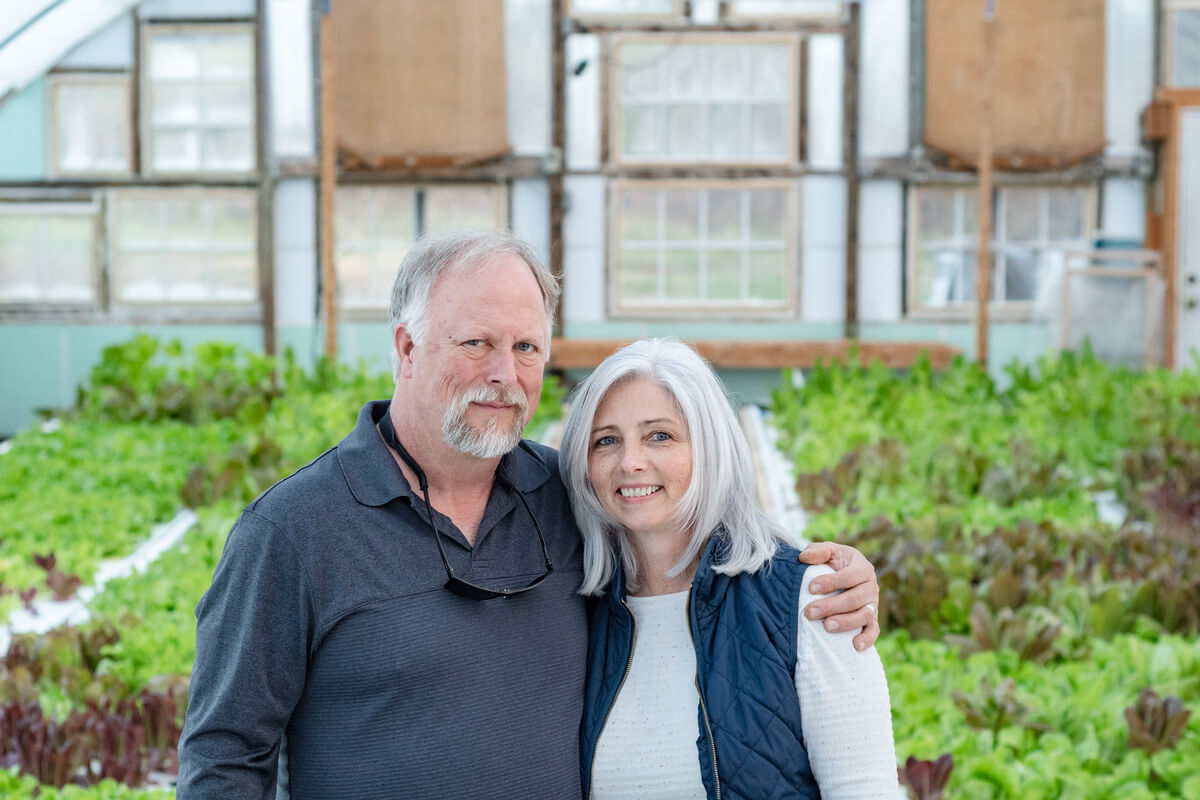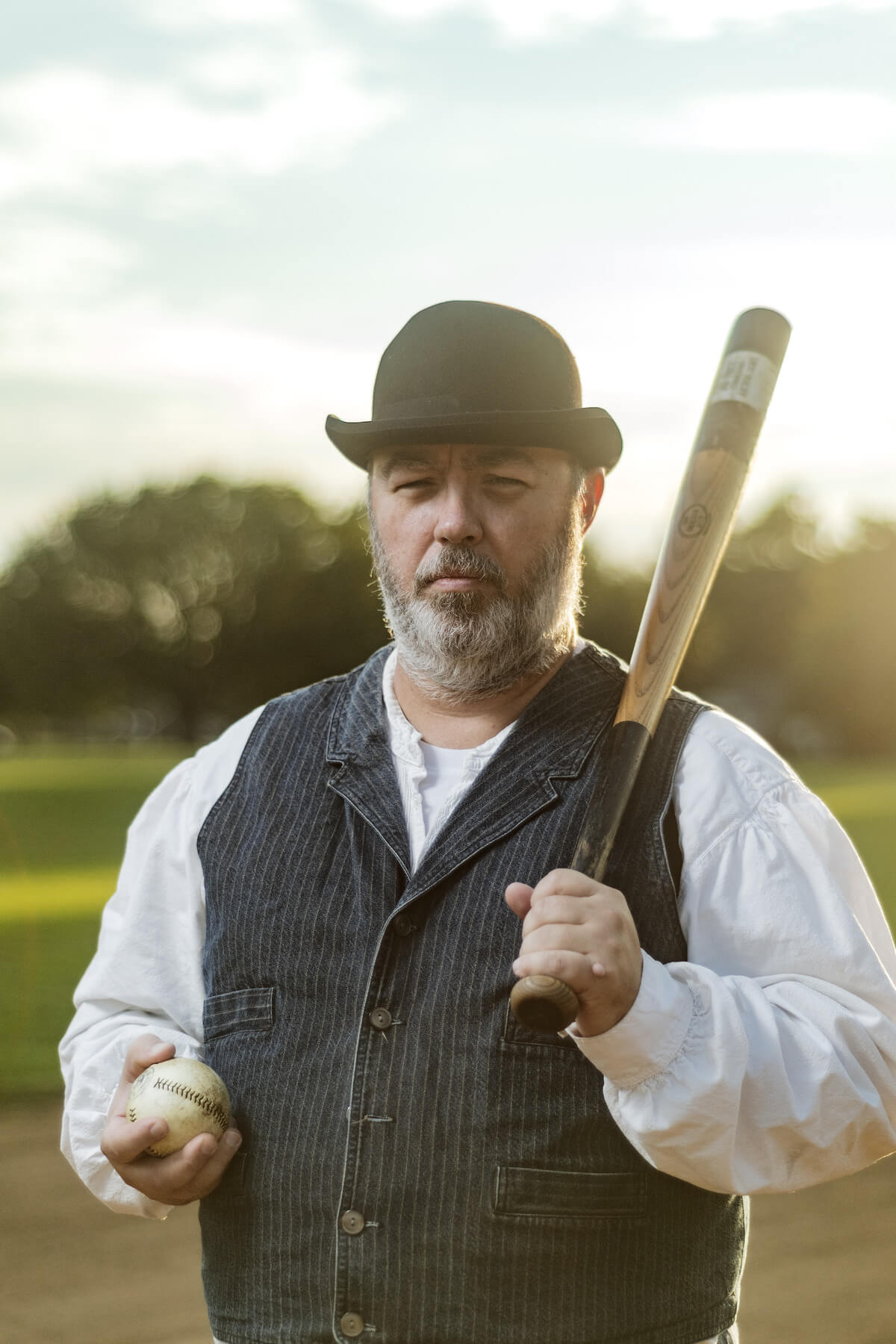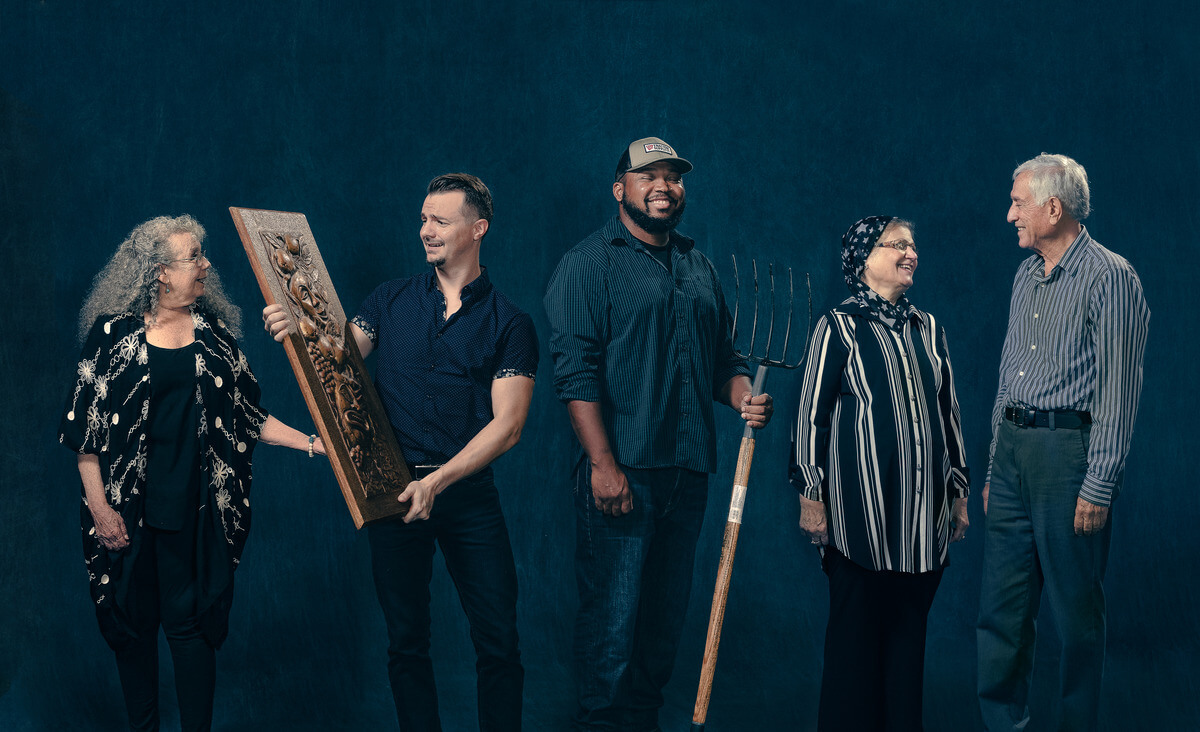IN A waiting room filled with patients and their families at Nashville’s Sarah Cannon Center, a cancer center named for Minnie Pearl, Miriam Carrick did what she’s always done. She’s not one to mind waiting, happy to busy her hands with her knitting. Her husband, Haskell, waited his turn for treatment as she cast on and cast off with little thought or glance at the stitches that formed the dishcloth underway. But her work caught the attention of the center’s employees.
“The nurses said, ‘Oh, look, she knits! Let’s get her. We want to learn to make caps for our patients that lose their hair.’ And I said, ‘Well, give me a copy of your pattern; run me off one,’” said Carrick.
With a copy of their pattern in hand, Carrick’s mission to further the program began. But where did her love of knitting begin?
She could barely see over the counter at the dry goods store where the clerk carefully wrapped her family’s purchases and tied them with string. It wasn’t the items inside the brown paper she eagerly anticipated but the string around it.
An only child, she was no stranger to the hard work associated with life on the family’s Normandy farm. But when time permitted, Carrick’s mother and grandmother were needleworkers, busy knitting, crocheting, and tatting. When she was 8 years old, her grandmother took the ball of string and taught her to knit.
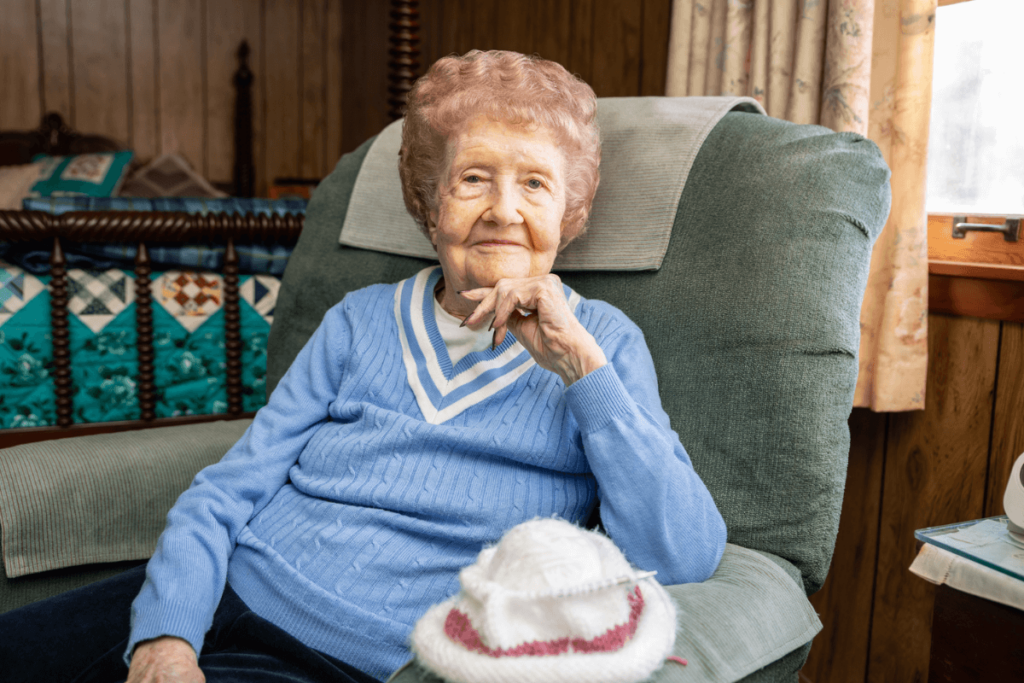
“My family was a string saver. My grandmother saved the string, and she wrapped it in a ball. There were no close neighbors who had children for me to play with, so my grandmother taught me how to knit using the string that she had saved from the packages,” said Carrick. “Grandmother had knit socks for the boys in the service, and we made a little blue sock with white heels. So, without any pattern and with little bitty needles about the size of baling wire, I learned how to knit, and from then on, I knitted up every piece of string I could find for my doll clothes, and I just continued to like to knit.”
For nine decades, she knitted. She knitted when the family moved from Bedford County to Oklahoma when she was in high school.
It’s where she met her first husband, David Nelson, at Sunday school, and where their daughters, Donna and Wilma, were born. She knitted when they moved back to the family farm in Bedford County because David offered to run it for her father after her grandmother passed away. And when it was time to leave farming behind and move to town, after she decided she’d work to put her girls through college, she knitted in any spare time.
After farming, David worked for Castner Knott’s and the Singer Sewing Machine Company. Carrick worked first for Bob Roberts Plumbing and Electric, then at Model Sportswear (formerly Model Matt), where she started as an order filler before moving to the ticket office and finally to engineering clerk. Carrick conducted time studies on the piecework in order to maximize efficiency. Model Sportswear was later sold to Stahl-Urban.

Her husband, David, passed away, and she was a widow for five years until a quick stop for bananas changed things. “I met Haskell when I stopped at Cook’s Market and asked for green bananas.
He said to me, ‘Does your husband like green bananas?’ I said, ‘Well, I don’t have one. But I like green bananas.’ And, of course, one thing led to another; we got to talking, and he asked me to go to the movie with him. Of course, we went together a good little bit, and then we decided to make it permanent. I had him for 33 years.”
Before being diagnosed with cancer himself, Haskell asked her to knit a cap for his niece, Donna King, who was undergoing treatments and had lost her hair. With a pattern and yarn from Frances Farrar at The Knit Kit, Carrick knit the unique hat resembling hair, and Haskell delivered it with love.
Later, it was Haskell’s cancer that led them to Sarah Cannon’s waiting room.
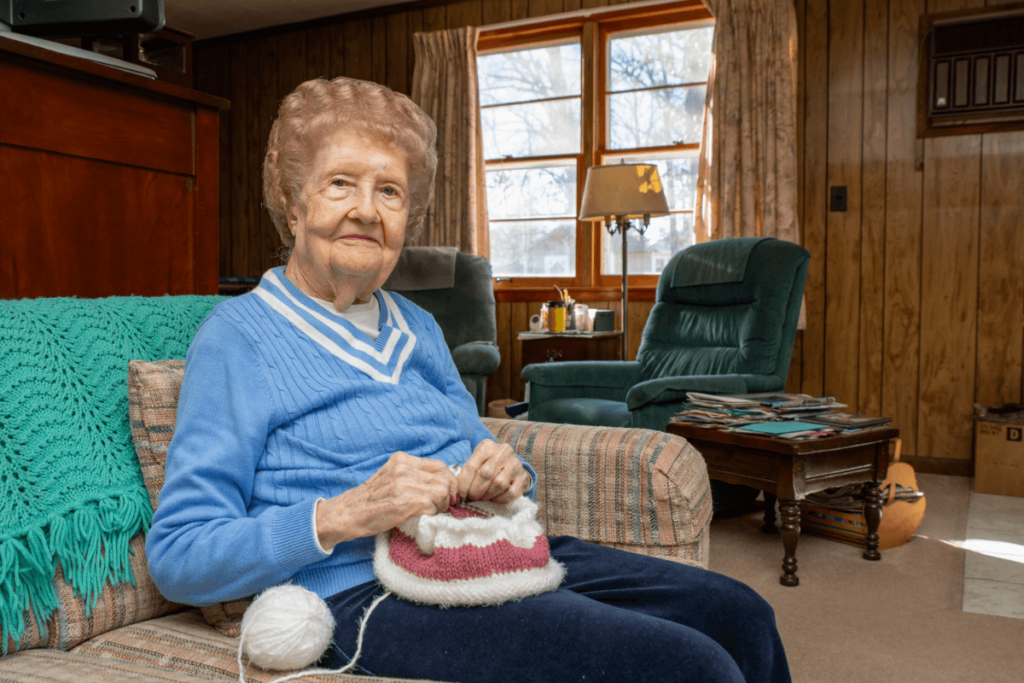
When Haskell went for treatments or Carrick drove a neighbor to Nashville doctor appointments, Carrick dropped off hats in increments of 50 at Sarah Cannon. Later, when she stopped driving in Nashville, her daughter, Donna, delivered them.
“I’ve done 2,555 so far: 2,525 to Sarah Cannon and the other 30 to family and friends,” she said.
So, what’s the key to such a long life?
“Somebody asked me [that], and I said it’s not because I was raised with a silver spoon. I was raised on a farm, and that’s hard work. And that’s it; I worked hard all my life,” said Carrick.
It’s a good life knit together with love and hard work from a family of string savers. GN

